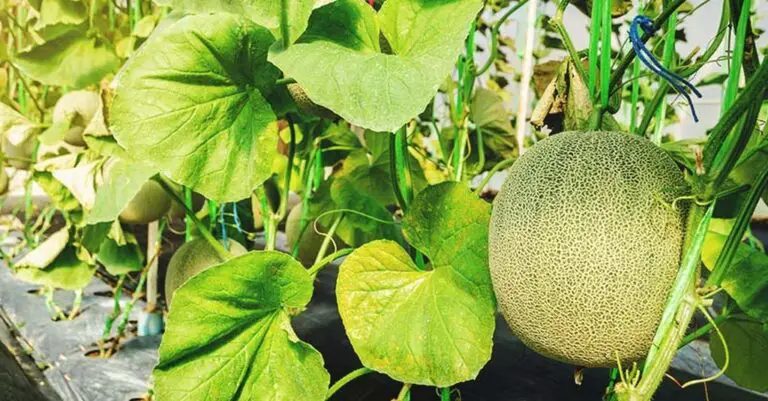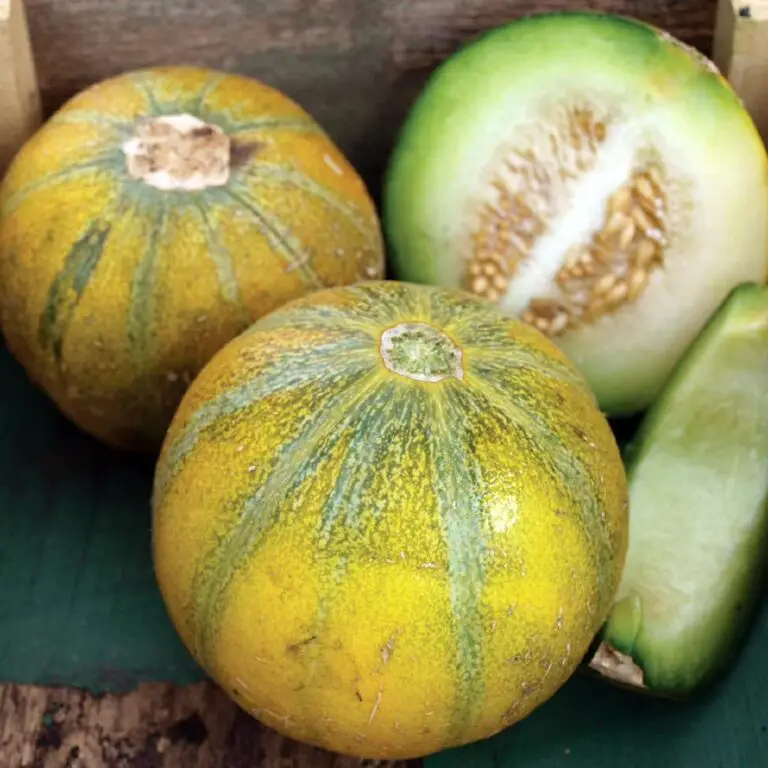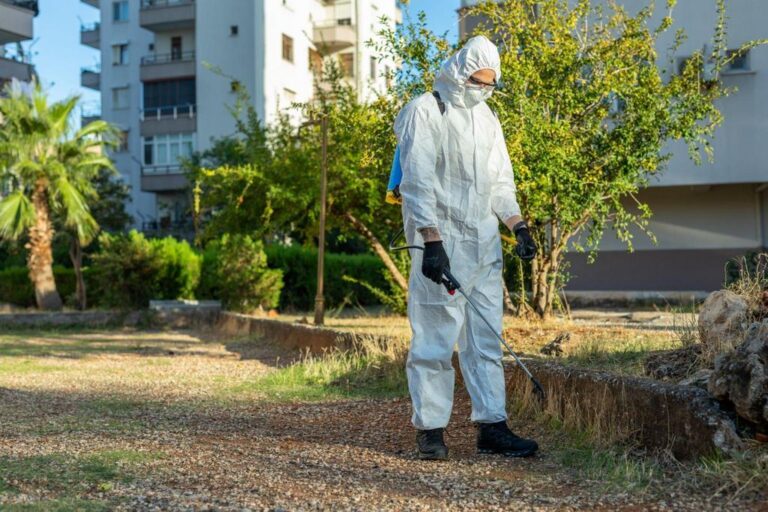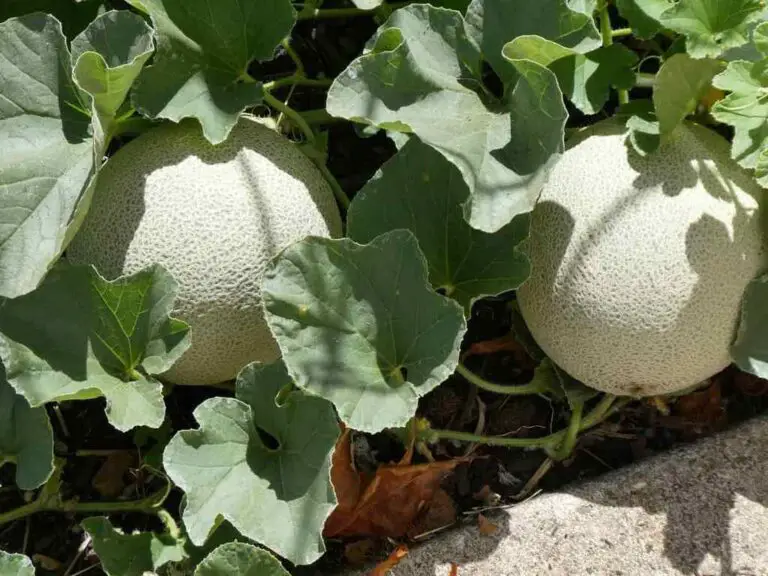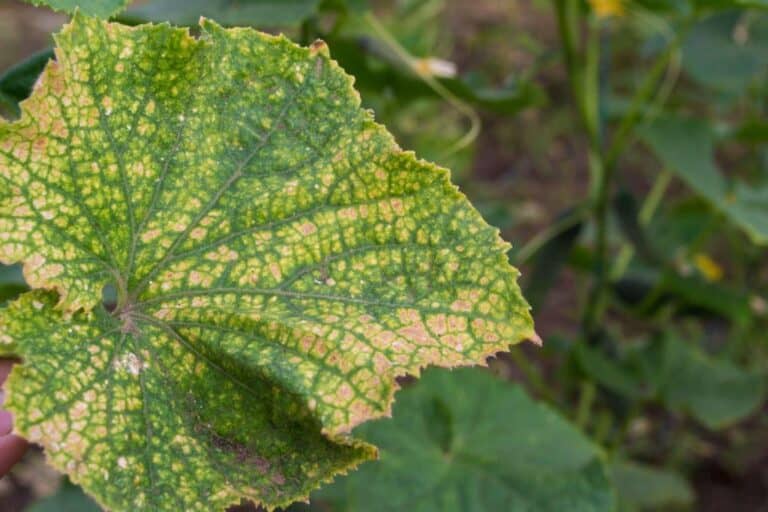Cantaloupe Leaves Turning Yellow: Here’s Why and How to Fix Them
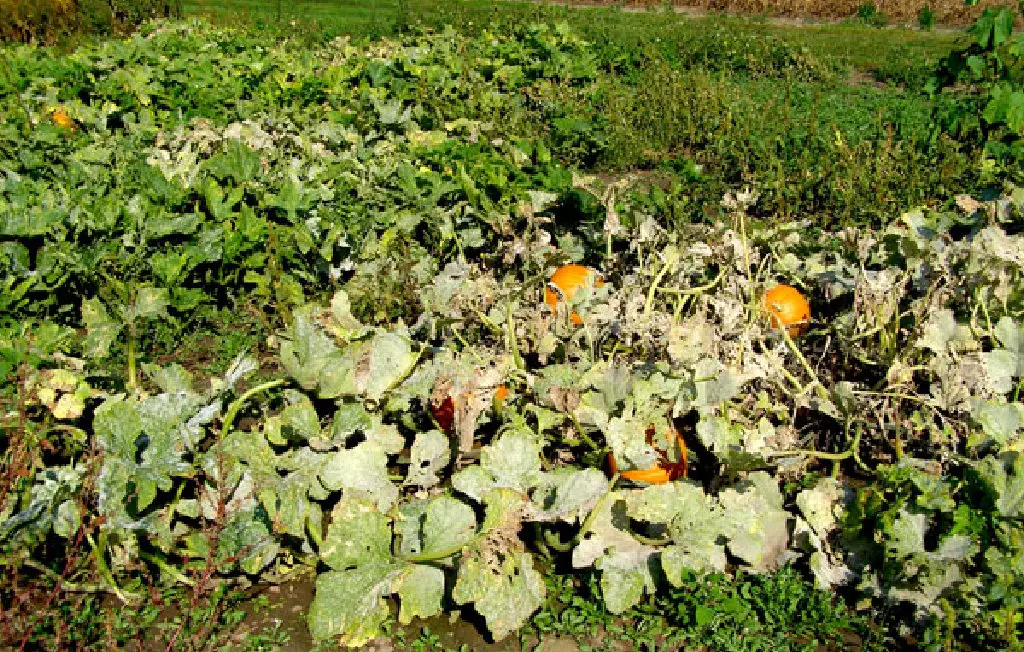
Have you ever grown cantaloupes only to find the leaves turning yellow? It’s a common issue that can be alarming for both new and experienced gardeners. The good news is that yellowing cantaloupe leaves are not always a sign of a serious problem, and there are often simple fixes that can help your plants recover.
From pests to poor environmental conditions, there are several reasons why your cantaloupe leaves might be turning yellow. Understanding the cause is the first step in finding a solution, and we’ll cover each of these causes in detail.
In this article, we’ll explore some of the most common causes of cantaloupe leaves turning yellow and what you can do to fix them. We’ll also share practical tips and techniques to help you address the underlying issues and nurse your cantaloupe plants back to health.
So if you’re worried about your yellowing cantaloupe leaves, don’t despair. With a little know-how and some patience, you can get your plants back on track and enjoy a bountiful harvest of sweet and juicy cantaloupes.
Overview of Cantaloupe Leaves
Cantaloupe is a tasty and healthy fruit that is often eaten in the summer when it is hot. It belongs to the Cucurbitaceae family and is a type of muskmelon that is usually grown in warm climates.
Cantaloupe plant can grow up to several feet long, and it produces large, green leaves that play a vital role in the fruit’s growth and development. As such, it is essential to understand the basic anatomy and functions of the cantaloupe leaves.
Cantaloupe leaves are a crucial part of the plant’s photosynthetic system, which converts light energy into chemical energy that the plant can use for growth and development. They are typically large, green, and lobed with a rough, slightly hairy texture.
The green color comes from chlorophyll, which is made by the leaves. Chlorophyll also contributes to photosynthesis. In addition to helping the plant make food, the leaves also protect it from things like too much heat and UV light.
Understanding how cantaloupe leaves are made and what they do is important if you want the plant to grow and make healthy fruit. Healthy leaves are bright green, have a slightly waxy feel, and have a strong structure.
They should be able to handle high temperatures and a lot of sun without getting stressed or turning yellow. If the leaves begin to turn yellow, it is usually an indication of an underlying issue that needs to be addressed. Usually, a healthy cantaloupe plant will have big, green leaves that are full of life. These leaves are important for making a lot of sweet, juicy fruit.
Why Cantaloupe Leaves Turning Yellow
Yellowing cantaloupe leaves can indicate a variety of issues affecting the plant. When the leaves start to turn yellow, it is a sign that the plant is stressed and is struggling to function correctly. So, it’s important to figure out what’s wrong and fix it quickly to keep the plant from being hurt for good.
The main reasons why cantaloupe leaves turn yellow are listed below. We offer some solutions to help you fix them.
1. Overwatering
When caring for your cantaloupe plants, yellow leaves can be an alarming sign that something is wrong. In some cases, this can simply be a result of overwatering.
When the soil is saturated with water, the plant’s ability to access oxygen is reduced, which can lead to a lack of chlorophyll production. Chlorophyll gives healthy leaves their bright green color, so if this is stopped, the leaves are likely to turn yellow.
How to Fix Overwatering
To prevent this from happening, you need to monitor your cantaloupe watering habits. Until the fruit starts to grow, cantaloupe plants usually need 1 to 2 inches of water per week. After that, you need to reduce watering to avoid saturating the soil.
By paying attention to how often you water your cantaloupe plants, you can help them grow well and avoid the problem of the leaves turning yellow from overwatering.
2. Manganese Toxicity and Deficiency
Yellowing cantaloupe leaves can be caused by various factors, including manganese toxicity and deficiency. Manganese poisoning can happen when the pH level of the soil drops below 5.4, which lets the plant take in too much manganese.
Although cantaloupe plants only require a small amount of this micronutrient, an excess can be toxic to the plant. As a result, the leaves will start to turn yellow and wilt.
On the other hand, manganese deficiency can also cause yellowing cantaloupe leaves, which can be mistaken for mite infestation. When a plant doesn’t have enough manganese, it gets intervenal chlorosis. This is a condition in which the veins of the leaves turn yellow but the tissue between the veins stays green. This yellowing of the leaves can also affect the growth and development of the fruit.
How To Fix Manganese Toxicity and Deficiency
To avoid manganese toxicity and deficiency, keep the right pH and nutrient balance in the soil. A pH level of 6.0 to 6.5 is best for cantaloupe plants because it lets them get the most nutrients and keeps them from getting too much manganese.
If you think a plant doesn’t have enough manganese, you should use a fertilizer with this micronutrient in it to make sure it gets enough. Regular inspection of the plant, including the leaves, can help to identify any issues promptly and take corrective measures before they cause permanent damage to the plant.
3. Diseases
Yellowing leaves on your cantaloupe plants can be a worrying sign that something is amiss with your plant. One potential culprit is the mosaic virus, a disease that can cause leaves to become distorted, small, and mottled with yellow. If you notice these symptoms on your cantaloupe plants, you need to act quickly to prevent the spread of the virus.
Infected plants should be promptly removed and destroyed to prevent further damage. It’s also important to take steps to prevent the virus from being introduced in the first place. Pests like aphids and cucumber beetles often spread the virus. Taking steps to control these insects can help lower the risk of getting sick.
How To Fix Diseases
To help prevent future outbreaks of the mosaic virus, consider planting virus-resistant cultivars. This and other common plant diseases have been bred out of these varieties. This lowers the chance of your cantaloupe plants getting sick and helps them grow well. With careful attention and proper care, you can keep your cantaloupe plants healthy and free from the effects of the mosaic virus.
Also, making sure to clean your hands and tools after each use can help stop the virus from spreading.
4. Pests: Whiteflies, Spider Mites, Squash Bugs
There are many things that can cause cantaloupe leaves to turn yellow, such as whiteflies, spider mites, and squash bugs. Small flies with white wings called whiteflies can weaken a plant by sucking its sap and making sticky honeydew. This honeydew feeds the growth of black mold, which can stop photosynthesis and turn the leaves yellow.
The adults can be vacuumed off the plant or sprayed with natural, biodegradable soap to get rid of whiteflies. The honeydew and mold can also be washed off with a gentle spray of water.
Spider mites are another common pest that can cause cantaloupe leaves to turn yellow. The yellow spots on the leaves can be used to find them. These annoying bugs like it when it’s dry, so keeping the leaves well-watered and clean can help stop them from spreading.
Additionally, squash bugs can contribute to yellow-spotted leaves. These bugs can be easily handpicked or trapped by using flat pieces of wood or cardboard under which they hide.
Finally, melon thrips, a long, yellow to whitish insect with a black line down its back, may cause cantaloupe leaf yellowing. These insects can cause leaves to yellow, turn brown, and eventually drop off the plant. When you look at the plant and its leaves on a regular basis, you can find pests early and treat them quickly and effectively to stop them from doing more damage to the plant.
How To Fix Pests: Whiteflies and Spider Mites
One of the most effective ways to control these pests is through the use of natural predators. Ladybugs and lacewings are two common predators that feed on whiteflies and spider mites, making them an excellent choice for controlling these pests. You can also introduce predatory mites, which feed on spider mites and can help to keep their populations under control.
You could also use neem oil or soap that kills insects. These products work by suffocating the pests, and they are safe to use on cantaloupe plants. Be sure to follow the manufacturer’s instructions when using these products and only apply them in the early morning or evening to avoid burning the leaves.
5. Poor Environmental Conditions
When cantaloupe leaves turn yellow, it could be because of things like air pollution, fungicides, or de-icing salt in the soil. Air pollution, for instance, can cause the older crown leaves to turn yellow, while fungicides and de-icing salts often cause yellowing along the margins of the leaves.
It’s important to take steps to protect your cantaloupe plants from the damage that these environmental factors can cause. You can help reduce air pollution by planting more trees around your home or using air-purifying plants indoors.
If you suspect that your cantaloupe plants have been exposed to fungicides or de-icing salts, you can try flushing the soil with water to help remove these substances. Additionally, avoid using chemicals in or near your garden that could harm your plants.
How to Fix Poor Environmental Conditions
In addition to addressing environmental factors, you can take other steps to keep your cantaloupe plants healthy and prevent yellowing of the leaves. Be sure to provide your plants with enough water and nutrients, and avoid over-fertilizing or over-watering, as this can also cause yellowing.
Check your plants often for signs of stress or pests, and take care of any problems right away if you find them. With proper care and attention, your cantaloupe plants can thrive and produce healthy, delicious fruit.
6. Guttation
When taking care of your cantaloupe plants, it’s important to know what can cause the leaves to turn yellow. Guttation, a natural process in which plants leak water from the edges of their leaves, could be a cause. This can cause water droplets to gather at the edge of the leaf. These droplets can contain different organic and inorganic compounds and minerals, like potassium.
Over time, as this water evaporates, the concentration of these compounds can increase, leading to a high concentration of salt at the leaf margin. This can cause the margin to yellow and eventually dry out, a condition sometimes referred to as “salt burn.”
How to Fix Guttation
While guttation is a natural and normal process, it’s important to be aware of the potential for salt burn and take steps to prevent it from damaging your plants. This can include carefully watching how plants are watered to make sure they don’t get too much water and giving them the right food to help them grow well.
By taking care of your cantaloupe plants in a proactive way, you can help stop guttation and keep your plants healthy and growing well.
Direct Sunlight Burn and Sunscald
Cantaloupe plants need enough light to grow well, but too much direct sunlight, especially in the hot summer months, can hurt them. Direct sunlight can cause leaves to become scorched or burned, which may lead to yellowing or leaves turning brown. Sunscald or heat damage can cause cantaloupe leaves to turn yellow. Before taking the right steps, it is important to figure out why the leaves are turning yellow.
Sunscald is what happens when fruits or leaves are left in direct sunlight for a long time. The intense heat from the sun can cause the leaves to become discolored, dry out, and eventually turn yellow. Sunscald can be prevented by providing shade to the plant during the hottest part of the day. Mulching around the plant’s base can also help keep the soil cool and prevent sunburn.
High temperatures during the summer months can also cause leaf yellowing. The leaves may lose water faster than they can take it in, which can cause them to wilt and turn yellow. The best way to prevent this is to water the plant regularly, especially during hot spells.
Cantaloupe plants require one to two inches of water per week, and it’s essential to make sure that the soil is moist but not waterlogged. Sunburn and high temperatures can cause plants to turn yellow, but if you water and shade the plant properly, this won’t happen.
Should You Cut or Trim Yellow Cantaloupe Leaves?
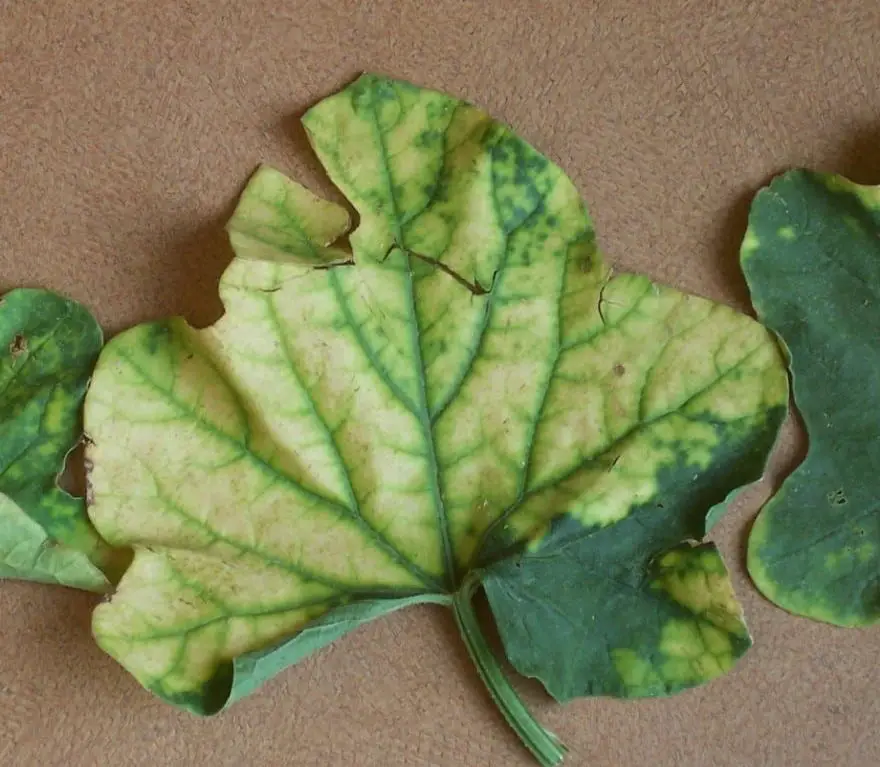
When it comes to yellowing cantaloupe leaves, gardeners often wonder if they should cut or trim them. The answer to this question depends on the severity of the yellowing and the cause of it.
In some cases, yellowing leaves may be a normal part of the cantaloupe plant’s growth cycle and do not require any action. But if the yellowing is caused by a disease or pests, it is best to remove the leaves right away to stop the problem from getting worse.
Before you cut off any yellowing leaves, you should figure out why they are turning yellow. If it is due to overwatering, you should adjust your watering schedule and allow the soil to dry out between waterings.
In cases where the yellowing is caused by a nutrient deficiency, you may need to amend the soil with fertilizers or organic matter to provide the plant with the nutrients it needs. If the yellowing is caused by a pest infestation or disease, removing the affected leaves can help contain the problem and prevent it from spreading to other parts of the plant.
When it comes to cutting or trimming yellow cantaloupe leaves, it is generally best to err on the side of caution. If the leaves are only slightly yellow, you can leave them in place and monitor the plant closely. But if the yellowing is severe and widespread, removing the affected leaves can help the plant put its energy into making healthy new growth.
Always use sharp, clean pruning shears and disinfect them between uses to prevent the spread of disease.

